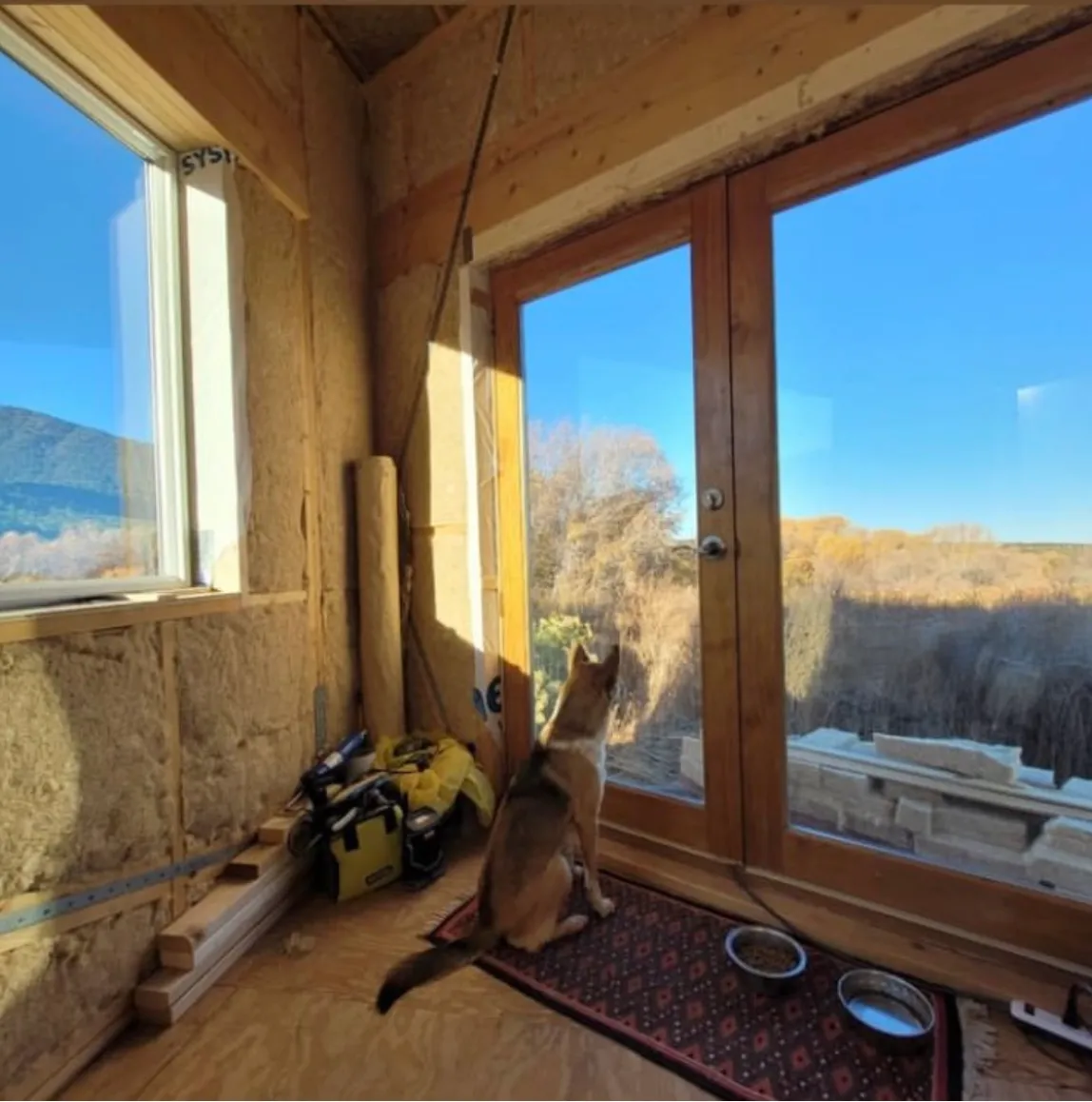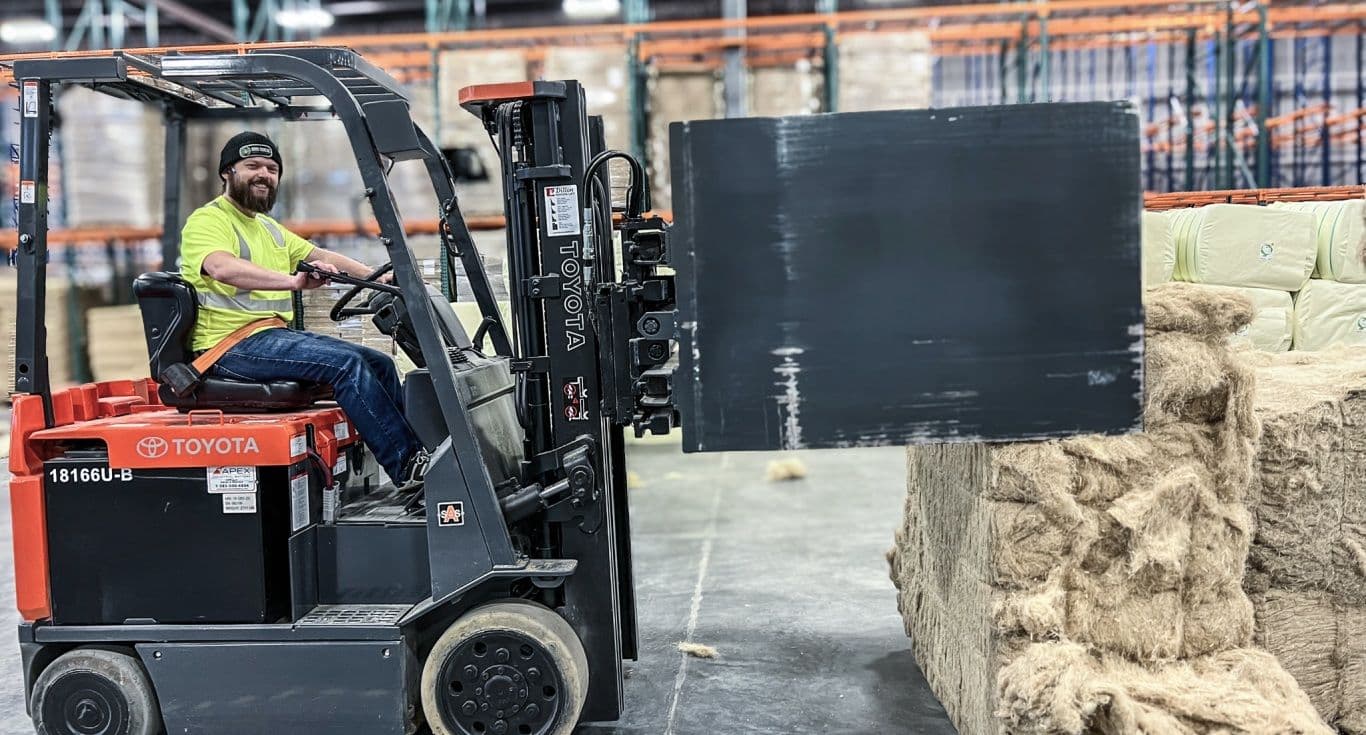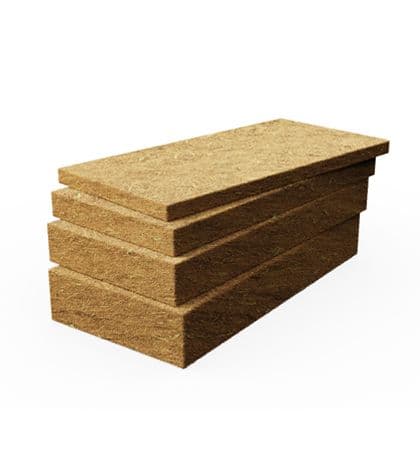1. Hempitecture’s insulation materials rely on industrial hemp. What are the core thermal, acoustic, and hygroscopic properties that set hemp fibres apart from mineral or petrochemical alternatives?
Hemp fibres provide strong thermal resistance, excellent sound absorption, and natural moisture regulation. Unlike synthetic or mineral materials, they buffer humidity without promoting mold or degrading over time. That breathability makes them ideal for creating healthy, high-performing building envelopes.
2. Can you walk us through the production process of HempWool—from raw stalks to finished batts? What stages require the most technical refinement to ensure consistency?
We start with raw stalks grown by American farmers. The bast fibers are separated, cleaned, and mechanically refined. From there, we blend and form them into batts using an airlay and thermal bonding process. The most technical stage is fiber preparation, where we adjust for natural variation to ensure uniform quality in the finished product.

3. What binder system is used in HempWool, and how have you ensured it maintains breathability and non-toxicity while achieving mechanical cohesion?
We use functional bonding fibers that activate with heat to create structure without sealing off airflow. The result is a cohesive batt that remains vapor open, non-toxic, and free of formaldehyde or VOCs. It keeps the product safe to handle and compatible with high-performance building standards.
4. How does HempWool perform under different climate scenarios, particularly in terms of R-value stability, moisture buffering, and long-term deformation?
HempWool maintains stable R-values across temperature swings. In fact, it actually improves in thermal performance when the average mean temperature gets colder—that’s when you need insulation the most! It buffers moisture without losing performance and resists compression or sagging over time. That durability allows it to perform consistently in both hot humid and cold dry climates.

5. Have you benchmarked HempWool or Hempcrete against conventional insulations such as fibreglass, rockwool, or expanded polystyrene in standardised fire, mould, or durability tests?
Yes. HempWool can achieve a Class A fire rating with proper treatment, and outperforms many conventional materials in mold resistance. We have developed a process for this, though some customers prefer untreated versions for healthier material use. It’s also been tested to ASTM standards for dimensional stability, durability, and microbial growth. The results consistently support its use in residential applications, with commercial use being our next focus.
6. Your materials are bio-based and carbon sequestering. What methodology do you use to quantify the carbon footprint, and how is this data third-party validated?
We use ISO-compliant life cycle assessments (LCA) from field to factory gate. Our carbon data is third-party verified and published in tools like EC3. Because industrial hemp captures more carbon during growth than we emit during processing, HempWool is a carbon negative material. Our first LCA was conducted with the University of Idaho and published in a peer-reviewed journal. We’re now conducting a second LCA for a verified EPD, which is an exciting development.

7. What adaptations—if any—are required for contractors used to installing conventional insulation when working with HempWool?
Very few. HempWool cuts with a hand saw or rotary cutting tool, and friction fits between studs. It doesn’t require protective equipment and installs similarly to mineral wool. Contractors often prefer it for ease of use and comfort on the jobsite, especially compared to irritating fiberglass or mineral wool.

8. Hempcrete is gaining traction globally. What key technical improvements have you made in your formulation or casting process to support faster installation or prefabrication?
Hempitecture is the U.S. pioneer in Hempcrete. We built the first prefab building and have worked with blocks and spray-applied buildings. We were the first to introduce spray technology for Hempcrete in the U.S. Our vision is to make building blocks the standard approach, allowing faster installation and improved on-site conditions. This reduces labor and helps scale residential and commercial deployment.
9. How are you addressing the scalability of supply chains, especially as demand rises? Are you investing in regionalised processing or decentralised production models?
We are. Regional supply chains reduce transport emissions and improve responsiveness. We’re investing in decentralized processing and working closely with domestic growers to secure fiber supply. This model supports both environmental performance and long-term scalability.

10. What’s next for Hempitecture—are you expanding into new product formats, refining fibre processing technologies, or scaling partnerships to meet the accelerating demand for biogenic materials?
All three. We’re expanding into CI (continuous insulation) panels and cold chain insulation. We’re refining fiber processing for improved performance and throughput, and growing our partner network to meet demand without compromising on quality or impact.








